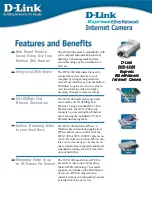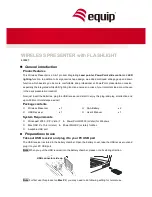
-9 -
3-3. CP1 STROBE CIRCUIT DESCRIPTION
1. Charging Circuit
When UNREG power is supplied to the charge circuit and the
CHG signal from microprocessor becomes High (3.3 V), the
charging circuit starts operating and the main electorolytic
capacitor is charged with high-voltage direct current.
However, when the CHG signal is Low (0 V), the charging
circuit does not operate.
1-1. Power switch
When the CHG signal switches to Hi, Q5407 turns ON and
the charging circuit starts operating.
1-2. Power supply filter
C5401 constitutes the power supply filter. They smooth out
ripples in the current which accompany the switching of the
oscillation transformer.
1-3. Oscillation circuit
This circuit generates an AC voltage (pulse) in order to in-
crease the UNREG power supply voltage when drops in cur-
rent occur. This circuit generates a drive pulse with a frequency
of approximately 50-100 kHz. Because self-excited light omis-
sion is used, the oscillation frequency changes according to
the drive conditions.
1-4. Oscillation transformer
The low-voltage alternating current which is generated by the
oscillation control circuit is converted to a high-voltage alter-
nating current by the oscillation transformer.
1-5. Rectifier circuit
The high-voltage alternating current which is generated at
the secondary side of T5401 is rectified to produce a high-
voltage direct current and is accumulated at electrolytic ca-
pacitor C5412.
1-6. Voltage monitoring circuit
This circuit is used to maintain the voltage accumulated at
C5512 at a constance level.
After the charging voltage is divided and converted to a lower
voltage by R5417, R5419 and R5420, it is output to the mi-
croprocessor as the monitoring voltage VMONIT. When this
VMONIT voltage reaches a specified level at the micropro-
cessor, the CHG signal is switched to Low and charging is
interrupted.
2. Light Emission Circuit
When RDY and TRIG signals are input from the ASIC expan-
sion port, the stroboscope emits light.
2-1. Emission control circuit
When the RDY signal is input to the emission control circuit,
Q5409 switches on and preparation is made to let current
flow to the light emitting element. Moreover, when a STOP
signal is input, the stroboscope stops emitting light.
2-2. Trigger circuit
When a TRIG signal is input to the trigger circuit, D5405
switches on, a high-voltage pulse of several kilovolts is gen-
erated inside the trigger circuit, and this pulse is then applied
to the light emitting part.
2-3. Light emitting element
When the high-voltage pulse form the trigger circuit is ap-
plied to the light emitting part, currnet flows to the light emit-
ting element and light is emitted.
Beware of electric shocks.
Summary of Contents for X-SHOT LDC-A310
Page 2: ... 2 1 SPECFICATION ...
Page 3: ... 3 ...
Page 4: ... 4 Rear Front 2 LOCATION OF CUSTOMER CONTROLS ...
Page 11: ... 11 ...
Page 12: ... 12 ...
Page 13: ... 13 4 4 DISASSEMBLY ...
Page 14: ... 14 4 ...
Page 15: ... 15 5 ELECTRICAL ADJUSTMENT ...
Page 16: ... 16 ...
Page 17: ... 17 ...
Page 18: ... 18 ...
Page 19: ... 19 ...
Page 20: ... 20 6 USB STORAGE INFORMATION REGISTRATION ...
Page 22: ... 22 MEMO ...
Page 24: ...25 26 MEMO MEMO ...
Page 29: ... 31 ...
Page 30: ... 32 MEMO ...
Page 31: ...33 34 OVERALL WIRING BLOCK DIAGRAMS OVERALL WIRING ...
Page 32: ...35 36 OVERALL CIRCUIT CAMERA CIRCUIT ...
Page 33: ...37 38 LENS CIRCUIT ASIC CIRCUIT ...
Page 34: ...39 40 SYSTEM CONTROL CIRCUIT ...
Page 35: ...41 42 ...
Page 36: ...43 44 ...










































